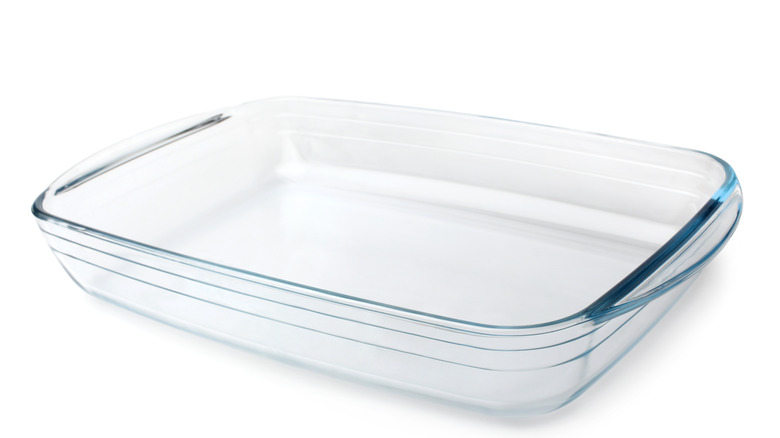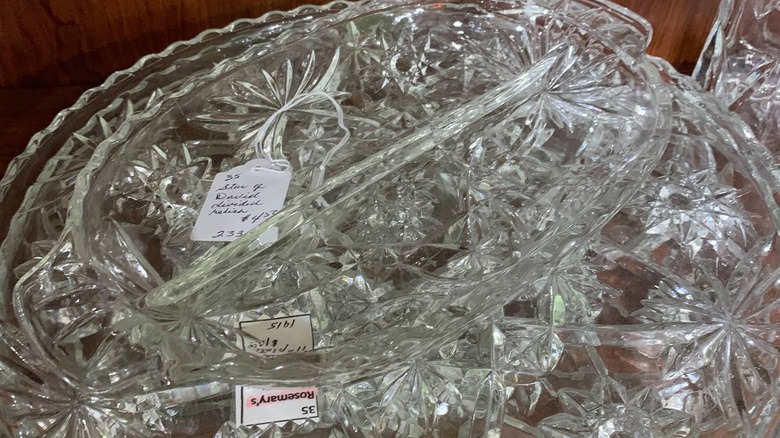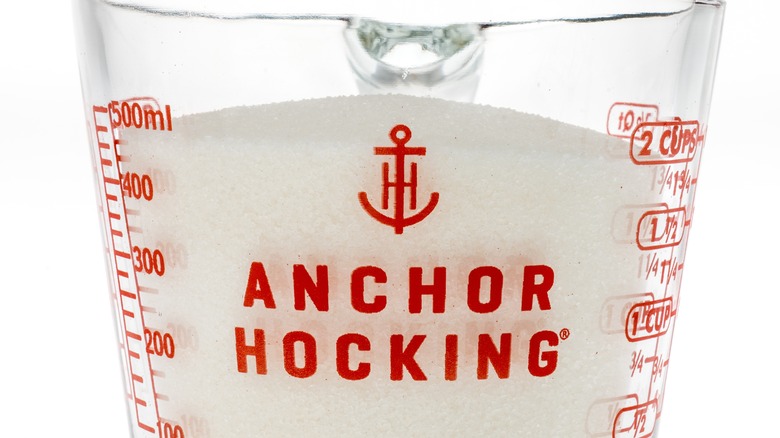The Eventful History Of Anchor Hocking Glass Cookware
When it comes to items to cook in, there are few materials that are as sturdy and variable, as glass cookware. Whether using a glass loaf pan, baking dish, or glass pan that can go from the stovetop to the oven, home cooks have used glass cookware for decades. As cooking vessels go, cooking with glass has a number of positive attributes, including the way it can retain heat once it's removed from the heat source and its transparency can help when baking so you can easily see if casseroles or bread is browning through your oven door without opening the oven or removing a lid to check on your food.
And in America, glass cookware has historically been made by a couple of popular manufacturers that have lasted the test of time, and one of those companies is Anchor Hocking. Since they've been around for generations, if you have a glass baking dish in your cabinet, there's a good chance you may notice the company's iconic logo featuring an anchor and the letter "H" on the bottom of it.
The company started with a handful of investors
In 1905 Isaac J. Collins, along with six of his friends, decided to buy the Lancaster Carbon Company, located in Lancaster, Ohio. The group raised $8,000 to purchase the company after it went into receivership. Collins worked for Ohio Flint Glass Company in the decorating department when he saw the opportunity to purchase the Lancaster Carbon Company. Despite their fundraising efforts, the $8,000 wasn't enough to cover the purchase and operating costs of the glass company. Although he had setbacks, Collins wasn't deterred, and he ended up getting additional funds from E. B. Good, who contributed $17,000.
Collins added another building, additional equipment, and 50 employees, all of which allowed him to start operating Hocking Glass Company, which was named for the nearby Hocking River. Those investments paid off, since the company produced and sold $20,000 worth of glass pieces during its first year of operation. By 1929, Hocking Glass Company became the largest producer of what's now known as "Depression Glass," thanks to a machine that automatically pressed glass. The company survived the Depression but ended up merging with Anchor Cap and Closure and became the glass manufacturer we know today — Anchor Hocking Company.
Anchor Hocking today and how it's different from Pyrex
The company has been going strong for over 100 years and today, the Anchor Hocking Company still creates all of its glass products from its original Lancaster location. For the past 40 years, Anchor Hocking glassware has been made through a process that the company calls Tempered-ToughⓇ, which helps to reinforce and thermally temper soda-lime silicate glass so that it can withstand high heat and resist shattering or exploding during baking.
Soda-lime glass is the most common form of glass made today. Its name originates from it being comprised of silica, also known as silicon dioxide, soda, or sodium oxide, and lime, which is calcium oxide, according to Britannica. Presently, the company makes a variety of glassware, from glass bakeware to serving ware, drinking glasses, mixing and measuring pieces, food storage containers, and even decorative pieces.
You might also be wondering how this glassware is different than Pyrex and the answer is they are very similar. Both glassware products can be put in the oven at a maximum temperature of 425 degrees Fahrenheit and each company suggests using trivets when moving their products from hot to cool areas to protect your tables and countertops from any possible heat damage. So, it ultimately just comes down to which ones you like better.


